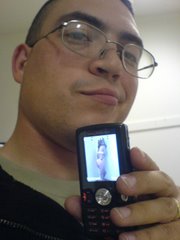One of the things that I noticed when I was in Iraq, was every time a group of new soldiers came in, at least half of them immediately went to the "Watania" shop on post, in an effort to aquire instant comms with the homefront.
Others, trying to be smart, "plan ahead" and buy a phone in the states, only to find that it doesn't work in Iraq. Or worse, they get sucked into a contract, which of course is completely useless. Most of the service personel that work for CDMA networks, don't even understand the most basic technology they're selling.
Here are a few things to remember when buying a phone with the intent to use overseas:
1. GSM= INTERNATIONAL (examples of American GSM networks are Cingular and T-Mobile USA)
CDMA = DOMESTIC ONLY!!!! (CDMA networks are those such as Sprint and Verizon)
Say what you want about either of these two technologies, the fact is, if you work (or play) internationally, GSM is the only way to go, hands down. No matter what any sales person tells you (either through ignorance or blatant deception), CDMA phones will not work outside of the United States (with the execption of Iraq, because we installed some towers there as part of reconstruction efforts- that being said, coverage is extremely limited, and GSM is still likely to give you the most value for your dollar).
How do tell the difference? Simple: if it has a SIM card, its a GSM phone. I'll say that again: IF IT HAS A SIM CARD, IT IS A GSM PHONE. If the sales rep can't produce a SIM card for you, then it isn't GSM and they are lying.
2. Know your frequency bands. American GSM operates on GSM 850/1900, while everyone else is on GSM 900/1800. For the layman, make sure the phone is "triband" or 'quadband". This is a little bit harder to discern without some research on individual phones. However, if you've already established that the phone is GSM, then you can possibly trust the sales person to steer you in the right direction.
3. Go prepaid. Mostlikely, you will just want to get an Iraqi (or Afghani, depending on your hotspot) SIM when you get there, or face some pretty obnoxious roaming charges. Now here's where it gets a little trickey. American GSM is locked down tighter than a prom date. Most of their phones are locked to a specific network; meaning that the 130 dollars you dropped on your shiny new RAZR will only accept SIM cards from the network it was purchased from.
Now, you can unlock most phones for a fee online, but it can be a pain in the ass, especially Motorola. So your best bet, is to do some research, find a phone you like, and then buy it online unlocked. Make sure to shop around; you shouldn't spend more than 300 dollars on an unlocked phone. it seems like a lot compared to what the networks are offering, but just remember; they are compensated in ways you can't see; like a contract or locking you in to their network. In general buying online offers a "no strings attached" option that I find more than appealling.
Well, that's it for now, stay safe and come home- you deserve it.
Friday, October 27, 2006

There have already been a ton of reviews on the W810i, so I'm not going to get too technical with this, especially since I just bought this phone in September of 2006, almost a full year after I first read about it on bengal boy.com
Let's just say that this phone looks good, performs great, and as of October 2006, I honestly wouldn't trade it for any other phone available on the market today. While the feature set is pretty robust, I honestly have to say that the key pad layout is my favorite feature. Notice that there are spaces between the keys: this make it actually possible to type without looking at the phone. In addition, I hate joysticks on a phone. I think its geeky. The W810 has a wonderful D-pad- even if it is made out of cheap plastic. The RF on this thing is superb, and the Memory Stick Pro Duo I have in it is loaded with games, songs, and applications. I can actually access my webcam with this phone. Absolutely outstanding. I'd recomend this phone to anyone.
Subscribe to:
Posts (Atom)
